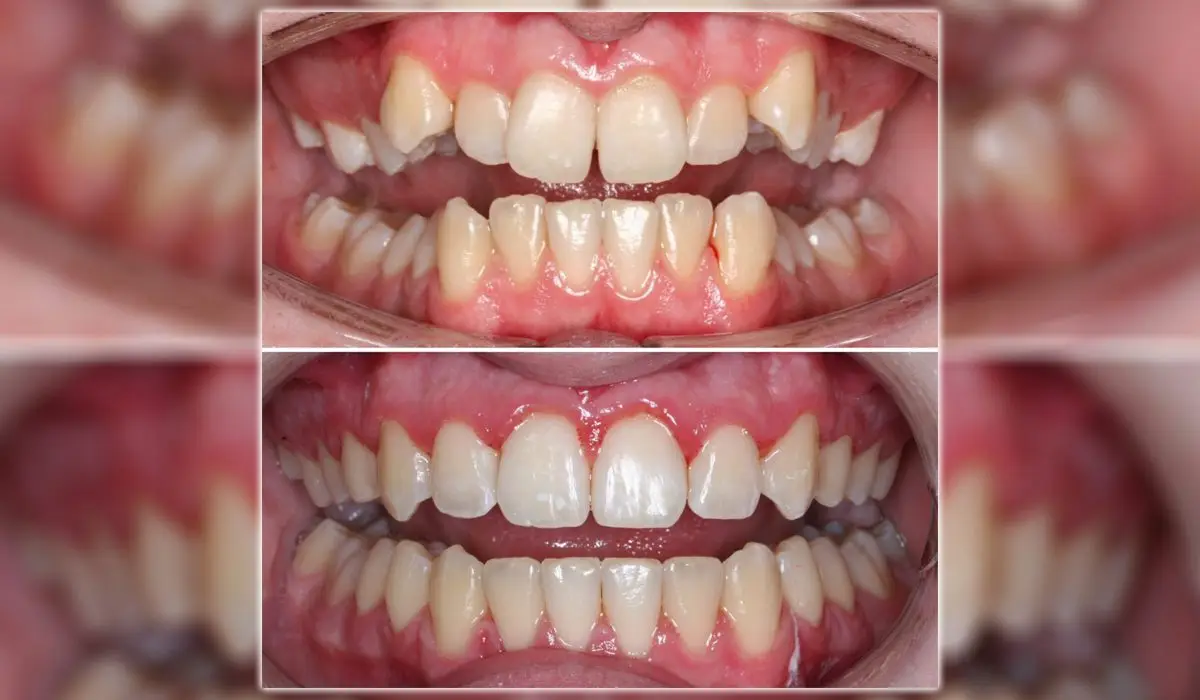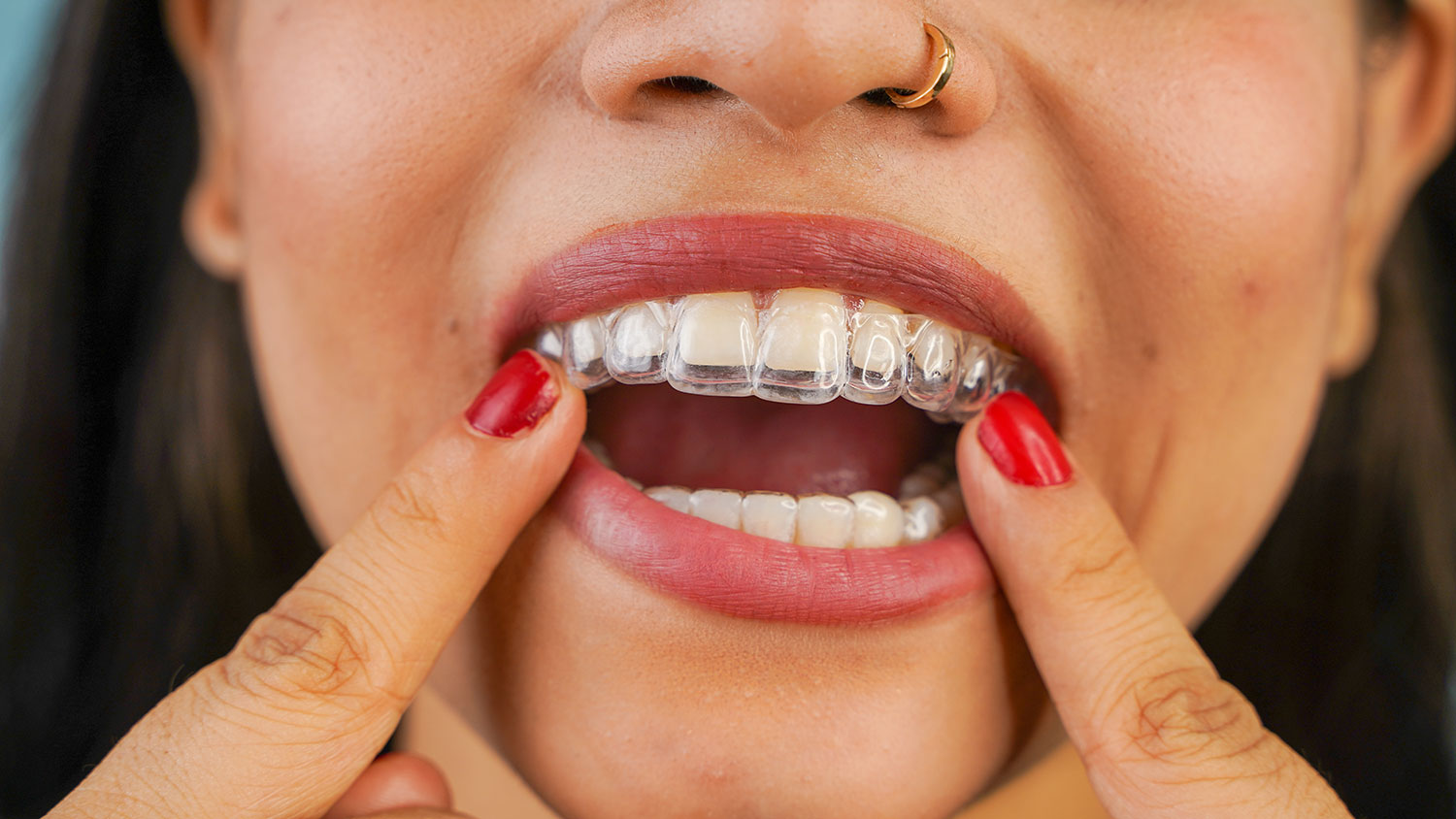Top Reasons to Pick Invisalign Over Other Orthodontic Treatments
Top Reasons to Pick Invisalign Over Other Orthodontic Treatments
Blog Article
Invisalign vs. Traditional Braces: Which Alternative Is Right for You?
When considering orthodontic therapy, the choice in between Invisalign and typical braces presents several essential elements that merit mindful examination. Invisalign offers a discreet choice with detachable aligners, while traditional braces provide a more noticeable yet efficient solution for severe imbalance.
Review of Therapy Options

In contrast, standard braces include steel braces and wires that are bonded to the teeth. This method applies continuous pressure gradually to attain alignment. While efficient for complex orthodontic problems, typical braces require routine sees for adjustments and can pose challenges in preserving dental hygiene due to the problem of cleaning up around brackets and cords.
Both options have their benefits, and the option usually depends upon particular oral conditions, lifestyle preferences, and person conformity. Eventually, speaking with an orthodontic specialist is critical for identifying one of the most ideal therapy plan customized to private requirements. Comprehending the subtleties of each choice can considerably influence the general success of orthodontic therapy.
Visual Considerations
A significant variable influencing the option in between Invisalign and conventional dental braces is the visual appeal each treatment provides. Invisalign aligners are crafted from clear plastic, making them practically unnoticeable when used. This very discreet appearance is particularly attracting grownups and teenagers that might feel uneasy regarding their orthodontic treatment. The ability to preserve an all-natural smile throughout the alignment process can considerably enhance the person's self-confidence in specialist and social settings.
In contrast, conventional dental braces consist of metal braces and wires, which can be a lot more obvious. While developments in orthodontic technology have actually led to the advancement of smaller sized brackets and colored elastics, traditional braces still keep an even more conspicuous account. For some individuals, the visibility of dental braces might discourage them from seeking needed therapy.
Inevitably, the option between Invisalign and typical dental braces may depend upon personal preferences relating to aesthetics. Clients who focus on discretion typically lean towards Invisalign, while those who are less worried about presence may choose typical braces. Understanding the visual implications of each option is essential for making a notified choice that straightens with one's way of life and preferences.
Comfort and Convenience

In terms of benefit, Invisalign aligners are removable, enabling individuals to enjoy their preferred foods without restriction and preserve ideal dental health. Brushing and flossing are simplified, as the aligners can be taken out during these routines, whereas conventional dental braces need careful steering around braces and cables.
In comparison, conventional dental braces necessitate routine adjustments, making them much less practical for those with hectic schedules. On the whole, the convenience and comfort of Invisalign make it an attractive option for numerous individuals seeking orthodontic treatment.
Treatment Duration and Effectiveness
While both Invisalign and typical braces are effective in correcting dental misalignments, the duration of therapy can vary substantially in between both choices. Generally, Invisalign treatment can take anywhere from 12 to 18 months, depending on the our website complexity of the case. The clear aligners work by gradually moving teeth into their wanted positions, and normal follow-ups with an orthodontist help ensure progression remains on the right track.
In contrast, typical dental braces usually need a longer commitment, generally ranging from 18 months to three years. This is because of their fixed nature and the use of cables and braces, which can be a lot more reliable for complex cases and severe imbalances (Invisalign). The treatment performance of typical dental braces is well-documented, as they enable exact adjustments and greater control over tooth motion
Inevitably, the option between Invisalign and typical braces might depend upon both the awaited therapy duration and the certain dental concerns available. Consulting with an orthodontist is critical, as they can provide customized referrals based upon private requirements, guaranteeing the selected approach aligns with preferred end results and timeframes.
Expense Comparison and Insurance Policy Alternatives
Expense plays a substantial duty in the decision-making process for individuals taking into consideration orthodontic treatment, whether going with helpful site Invisalign or standard braces. Typically, the cost of Invisalign ranges from $3,000 to $8,000, while traditional dental braces usually set you back between $2,000 and $6,000. Variables affecting these expenses include the complexity of the situation, the duration of therapy, and geographical place.
Many oral insurance strategies offer partial insurance coverage for orthodontic therapies, however the specifics can vary commonly. Generally, standard dental braces may be much more frequently covered by insurance policy strategies compared to Invisalign, which some insurance companies classify as an aesthetic procedure.
Additionally, several orthodontic methods supply flexible payment plans, making both therapy choices much more easily accessible. Patients must ask about potential funding alternatives and discounts for in advance payments. Evaluating the overall expense, consisting of insurance policy advantages and layaway plan, is essential for making an informed decision that aligns with both aesthetic preferences and budget plan factors to consider.

Final Thought
In summary, the choice in between Invisalign and standard dental braces rests on numerous aspects, consisting of aesthetic choices, convenience, treatment period, and expense. Invisalign uses a discreet, detachable alternative that facilitates oral health and nutritional adaptability, while conventional dental braces may be preferable for complex oral problems and often come at a reduced price factor. Inevitably, examination with an orthodontist is vital to evaluate specific conditions and determine one of the most suitable therapy option for accomplishing optimum oral placement.
When considering orthodontic treatment, the option between Invisalign and straight from the source conventional dental braces provides several crucial variables that warrant mindful examination.Contrasting Invisalign and standard braces exposes unique therapy alternatives for orthodontic modification.While both Invisalign and traditional braces are effective in fixing dental imbalances, the duration of treatment can vary significantly in between the two choices.Expense plays a considerable duty in the decision-making procedure for people thinking about orthodontic treatment, whether choosing for Invisalign or typical dental braces.In summary, the selection in between Invisalign and conventional braces hinges on several elements, consisting of visual choices, convenience, therapy duration, and price.
Report this page